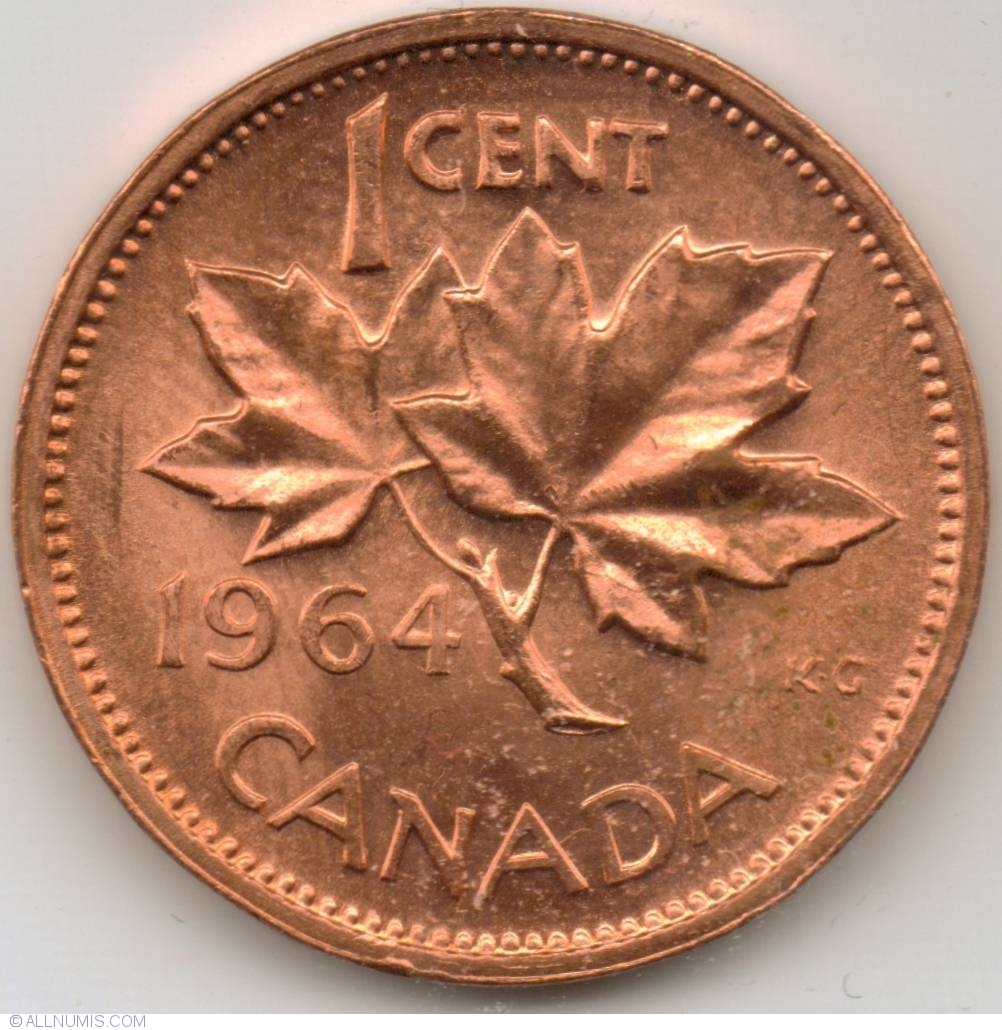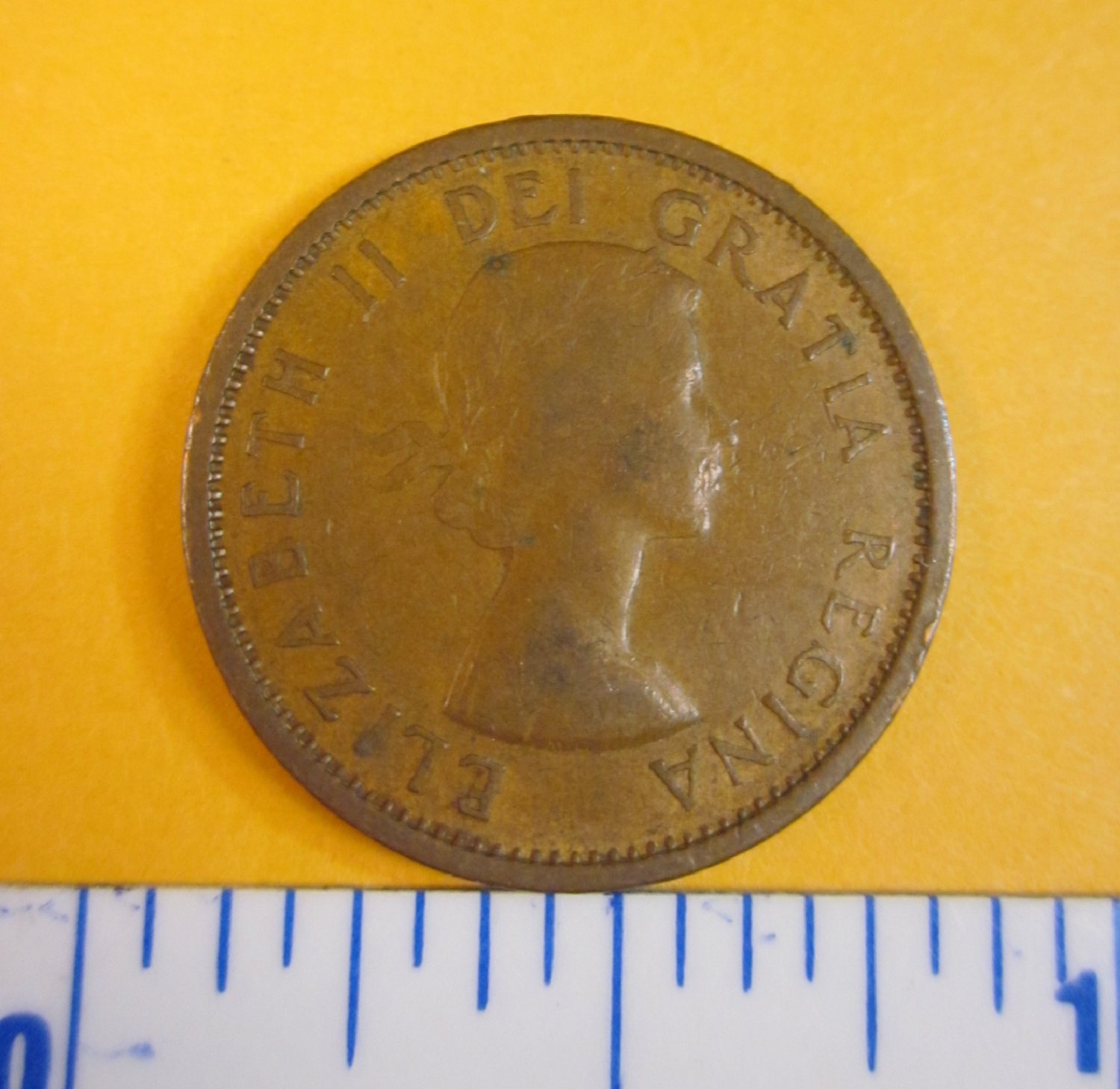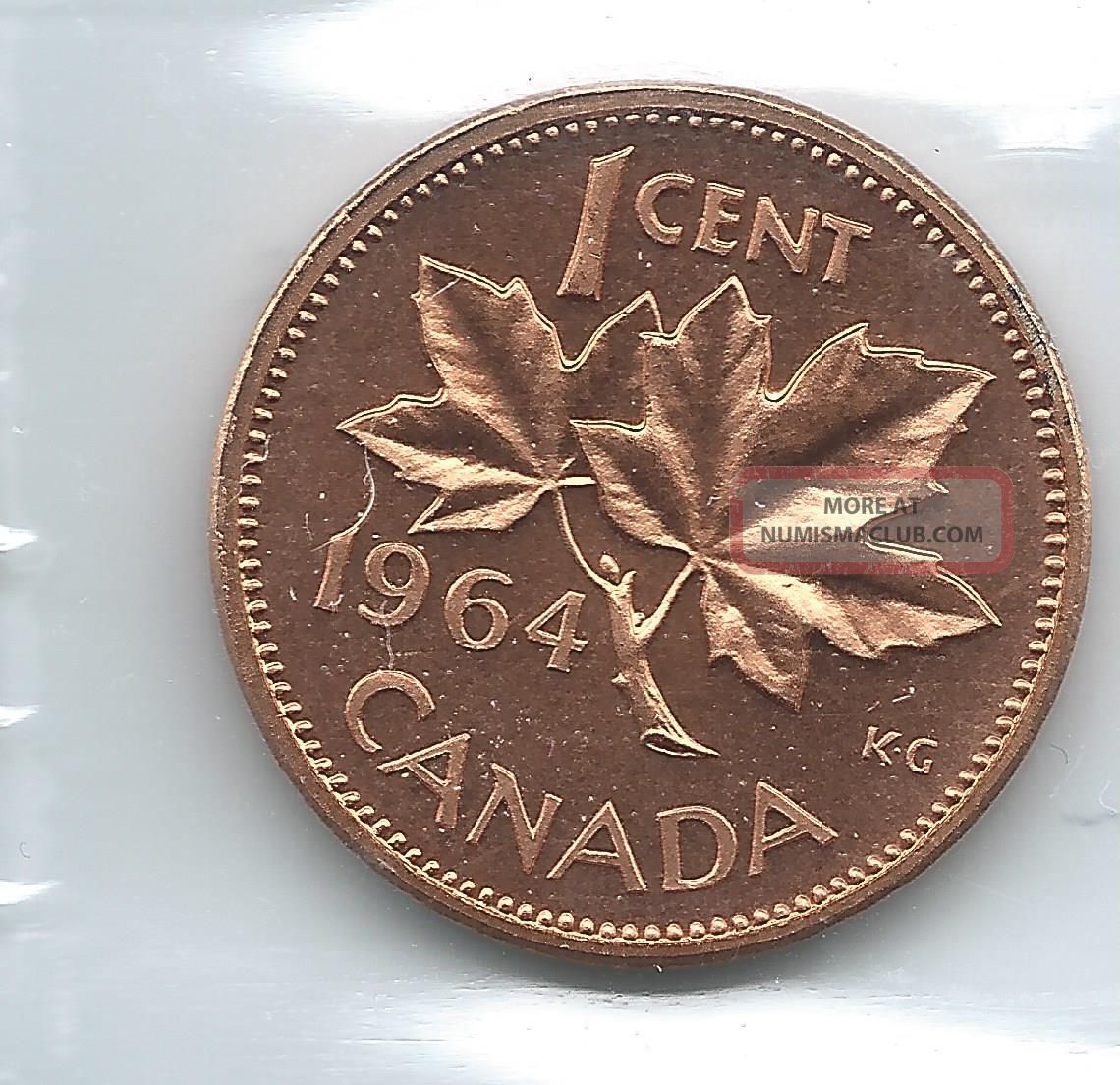

Fresh production of new cents (with the weight increased to 1⁄ 5 ounce or 5.67 grams) was not required until 1876. Some of the coins were even sold at a 20% discount, and were inherited by the Dominion government in 1867. However, their light weight compared to the bank and merchant halfpenny tokens readily available at the time was a serious hindrance to their acceptance by the public. The coin's specifications were chosen with the intention of the coins also being useful as measuring tools. These cents were originally issued to bring some kind of order to the Canadian monetary system, which, until 1858, relied on British coinage, bank and commercial tokens ( francophones calling them sous, an historical term from the French currency), U.S.

The first Canadian cent was minted in 1858 and had a diameter of 1 inch (25.4 mm) and a weight of 1⁄ 100 pound (4.54 g). The 1997 copper-plated zinc coin proved difficult to plate in the twelve-sided shape, hence the mint reverted to a round shape. This was to help the visually impaired identify the coin. Pennies minted from 1982 to 1996 are twelve-sided. The maple twig depicted on the coin is botanically incorrect as the phyllotaxis of the twig on the coin is clearly alternate, while maples always have opposite leaves. It was designed by the Canadian artist Alex Colville, and its use in 1967 marked the only time the 1937 maple leaf design was not used for the penny before it was discontinued in 2012. A special reverse side, depicting a rock dove, was issued in 1967 as part of a centennial commemoration.
#1964 canadian penny update#
The final obverse depicts Queen Elizabeth II her likeness was introduced in 1953 and later saw three design updates, the first occurring in 1965, a 1990 update to the design of Dora de Pedery-Hunt, and the 2003 update designed by Susanna Blunt. Like all Canadian coins, the obverse depicts the reigning Canadian monarch at the time of issue. Goods can still be priced in one-cent increments, with non-cash transactions like credit cards being paid to the exact cent. Nevertheless, once distribution of the coin ceased, vendors were no longer expected to return pennies as change for cash purchases and were encouraged to round purchases to the nearest five cents.

Production of the penny ceased in May 2012, and the Royal Canadian Mint ceased distribution of them as of February 4, 2013. Slang terms include cenne, cenne noire, or sou noir (black penny), although common Quebec French usage is sou. In Canadian French, the penny is often known by the loanword cent in contrast with the heteronymous word meaning " hundred" ( French: ( listen)), this keeps the English pronunciation ( listen). decimal coins and Spanish milled dollars. Penny was likely readily adopted because the previous coinage in Canada (up to 1858) was the British monetary system, where Canada used British pounds, shillings, and pence as coinage alongside U.S. According to the Royal Canadian Mint, the official term for the coin is the one-cent piece, but in practice the terms penny and cent predominate. View the grading section to identify grades (AG-3, F-12, AU-50, MS, PL, SP).In Canada, a penny (minted 1858–2012) is an out-of-production coin worth one cent, or 1⁄ 100 of a dollar. Specimen coins are struck up to two times on numismatic presses. Before 1996, if specimen coins have been removed from their protective envelope or original package, it is harder to differentiate them from PL coins. SP (Specimen): Special collectors coins struck at the Mint with a frosted/mirror appearance on the design and effigy from 1996 to 2023. If Proof-like coins have been removed from their protective envelope or original package, it is harder to differentiate them from uncirculated coins. PL (Proof-like): Coins not intended for circulation struck and sold by the Mint in a special package despite the fact that their composition is identical to the coins produced for circulation.


 0 kommentar(er)
0 kommentar(er)
